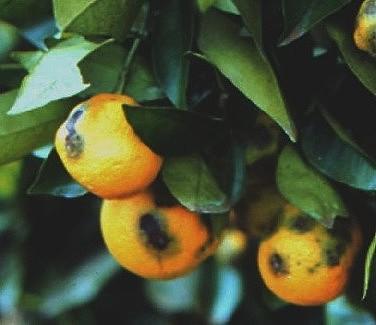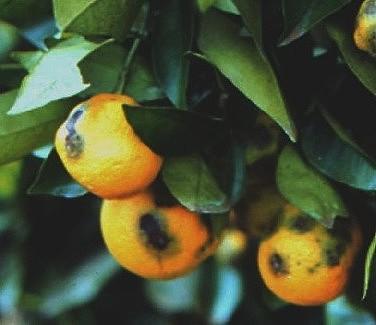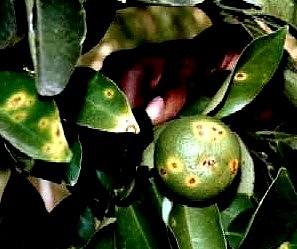



Phaeoramularia fruit and leaf spot
The disease is caused by fungus Phaeoramularia angolensis. The disease is favoured by wet, cool conditions. On leaves, the fungus produces circular, mostly solitary (single) spots that are up to 10 mm in diameter with light brown or greyish centres. Each spot is usually surrounded by a yellow halo. Occasionally, the thin necrotic tissue in the centres of old spots falls out, creating a shot-hole effect. During rains, leaf spots on young leaves often join together ending in generalised chlorosis. Premature defoliation takes place when leaf petioles are infected. On fruit, the spots are circular to irregular in shape or joining together and surrounded by yellow halos. Most spots measure up to 8 mm in diameter. On young fruits, symptoms often start with nipple-like swellings without yellow halos.
Spots on mature fruits are normally flat, and often a dark brown to black sunken margin similar to anthracnose around the spots is observed. Fruits of more than 40 mm in diameter are somehow resistant to the disease. The disease has been observed on all citrus species including grapefruit, lemon, lime, mandarin, pummelo and orange. Grapefruit, mandarin, pummelo and orange are very susceptible. Lemon is less susceptible and lime is least susceptible. The disease can reduce yield by 50 to 100%.
- The disease can be effectively be controlled by a number of fungicides including copper based products.
- Successive use of coppers may cause stippling (dot-like marks) on the fruits.
